Calvin Klein: A History and Timeline

When one conjures up Calvin Klein, one thinks of the master of minimalism, sexual provocation, marketing genius, gender fluidity, streetwear, high-low, and celebrity relationships.
Over its 56 years in business, the Calvin Klein brand has grown into an international powerhouse full of groundbreaking moments, sensational collections, some much publicized personal escapades, fights with licensees, a takeover by PVH Corp., and many controversial and break-through ad campaigns. Through it all, Klein’s products have continued to sell — global retail sales of Calvin Klein products were about $9.3 billion in 2022.
More from WWD
When Klein was engaged with the house he cofounded, he turned out of-the-moment, trendsetting collections. Along with his mastery of the runway — think barely there slip dresses, the sensuality of the ’70s, the street vibe of the ’90s — he was closely aligned with his jeans and underwear, which came to define much of his commercial success. Along with fragrance, Klein was one of the first designers to understand that fashion is much more a calculated point of view than a price point.
His clothing over the decades went from snappy cuteness to seductive chic, according to Bridget Foley, former executive editor and chief fashion critic of WWD. “And unlike Halston, that other great fashion star who spent days designing and debauching at Studio 54, Klein remained a powerful force for decades,” Foley wrote in WWD in 2008.
“My philosophy has always been the same. It’s always been spare, it’s always been about sensuality, it’s always been sophisticated. And above all, it’s always represented what I think is modern,” Klein told WWD in 1984.
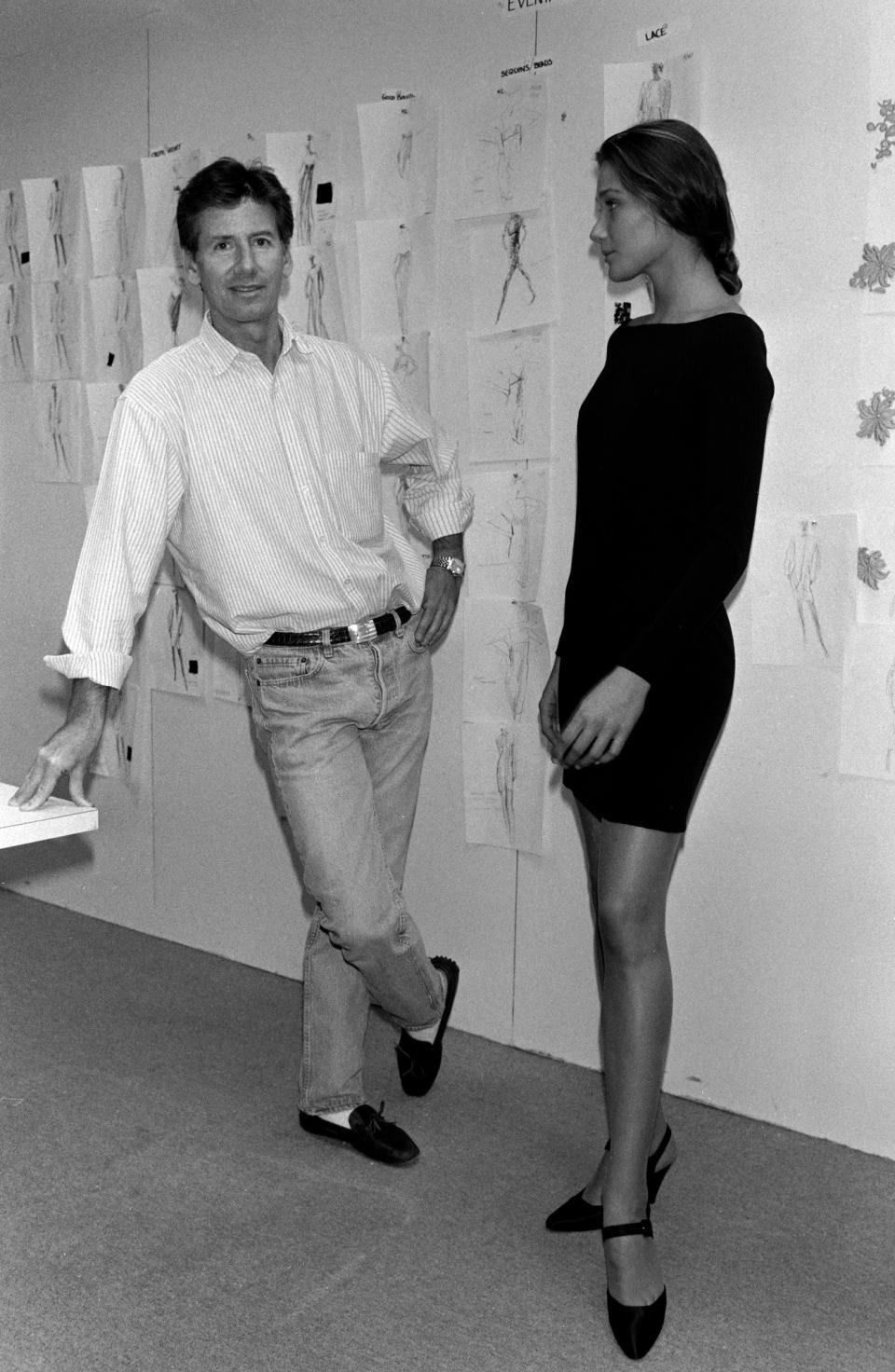
Klein’s advertising gained notoriety in 1980 when he put a 15-year-old Brooke Shields in a pair of his Calvin Klein jeans and she purred, “You want to know what comes in between me and my Calvins? Nothing.”
As Klein told WWD in 1994, “I didn’t set out thinking how to be controversial. Only how to make this woman look to-die for, a killer — with no [obvious] effort. But all of a sudden, people get upset. With Brooke Shields years ago, I thought it was a hoot, but all these people went crazy. We need newness and excitement in fashion. That’s what it’s about — that’s what puts the fun in fashion….We’re always questioning people’s values. How much can you provoke? How much are they willing to show? Is it decent? Is it exciting? is it valid? Is it over the line? It’s a whole process, but it’s not about trying to be controversial or trendy.”
Klein took his hits along the way, especially when the federal government investigated his kiddie-porn rumpus room CK Jeans campaign shot by Steven Meisel in 1995.
“I don’t think newness is ever over, or staying on the edge,” he told WWD in 2000. “Fashion is about change. You have to keep evolving and changing. It has to be new. You have to keep pushing it.”
Calvin Klein cofounded Calvin Klein Inc. with his best friend Barry Schwartz in 1968 after Schwartz lent him $10,000 and they started producing coats. Klein, who attended the Fashion Institute of Technology, and Schwartz opened offices at Manhattan’s York Hotel at 488 Seventh Avenue to get the business going. Throughout their 35-year partnership, Schwartz and Klein made every major decision together. Schwartz handled the business, and Klein handled the creative.
In an interview in 2008, five years after selling the company, Schwartz said he was most proud of how large and well-known the company became. Under their watch, CKI was profitable every year it was in business. “I’m most proud of the numbers, the amount of money we were able to make. I’m also proud of building a world-class brand. When things were going great, they were comparing the brand to McDonald’s and Coca-Cola,” said Schwartz.
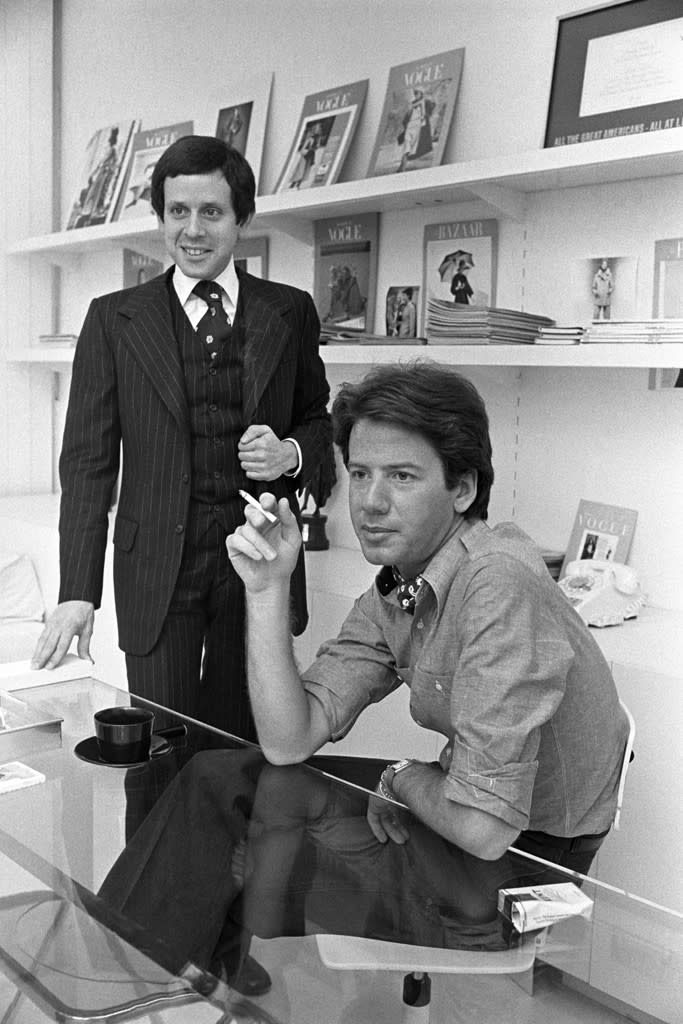
At the outset, Klein designed six neatly cut “architectural” coats and three dresses and wheeled them across town on a clothes rack to an appointment at luxury boutique Bonwit Teller. Klein left Bonwit Teller with a $50,000 order to fulfill. In 1973, the label unveiled a complete line of women’s sportswear. This was the time when American fashion was on the rise and Halston was the king. Klein made his mark with beautiful coats and his clean-cut, all-American sportswear. That year, he won his first Coty American Fashion Critics’ Award. In 1974, he won his second Coty Award and divorced his first wife, Jayne. The following year, Klein received his third Coty Award, becoming the only designer to win three consecutive Cotys.
In 1977, Klein’s daughter Marci was kidnapped on her way to school, and the designer immediately delivered the $100,000 ransom, and Marci was returned. Her kidnappers — her babysitter Paule Ransay, Ransay’s half-brother, Dominique, and his friend, Cecil Wiggins, were arrested two days later. Also that year, Studio 54 opened and Klein became a fixture, along with the likes of Liza Minnelli, Halston and Andy Warhol.
In 1978, Klein added Calvin Klein men’s tailored clothing and sportswear, and Calvin Klein Jeans was launched via a license with Puritan. Two years later, the 15-year-old Shields was featured in the Calvin Klein Jeans ad campaign and the brand soon became a denim juggernaut. In 1978, Calvin Klein Cosmetics Co., owned by Klein and Schwartz, launched its first fragrance, Calvin Klein.

In 1980, the Minnetonka Corp. bought the rights to produce Calvin Klein cosmetics for $1 million, stock and ongoing royalties under a license to use the Calvin Klein trademark. The following year, Klein launched his first men’s fragrance, Calvin for Men. In 1982, the designer expanded with Calvin Klein Underwear for men, setting off another phenomenon by launching the designer-branded intimate apparel category. In 1983, Klein added women’s underwear, and bought Puritan, its jeans licensee, for $68 million.
In the meantime, in 1983 Klein publicly rebutted growing speculation about his health, denying to WWD that he was dying of AIDS. In a front page 1983 article, he told WWD, “I’m in great health….For a long time I wouldn’t even discuss it, because people tend to believe that denials are a way of hiding the truth. But now it’s gotten way out of proportion, and Barry even had to call my mother when I was away to tell her I’m OK….I understand why I may be a target. I’m young, I’m successful, I’m not so bad looking and I enjoy living life in the fast lane. It’s good gossip.”
In 1985, the Calvin Klein Obsession fragrance was introduced and the following year, Klein married Kelly Rector.
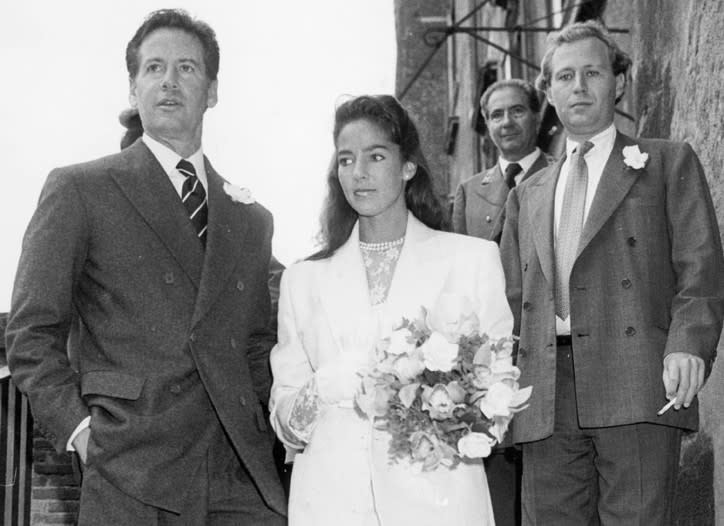
In 1988, the designer added the Eternity fragrance, and named Christy Turlington the face of the Richard Avedon shot campaign, catapulting her to supermodel status and kicking off a long-term collaboration between the model and the designer. Klein checked himself into the Hazelden Foundation rehab center to undergo treatment for reported alcohol and prescription drug abuse. Carolyn Bessette started working at a Calvin Klein store in Boston.
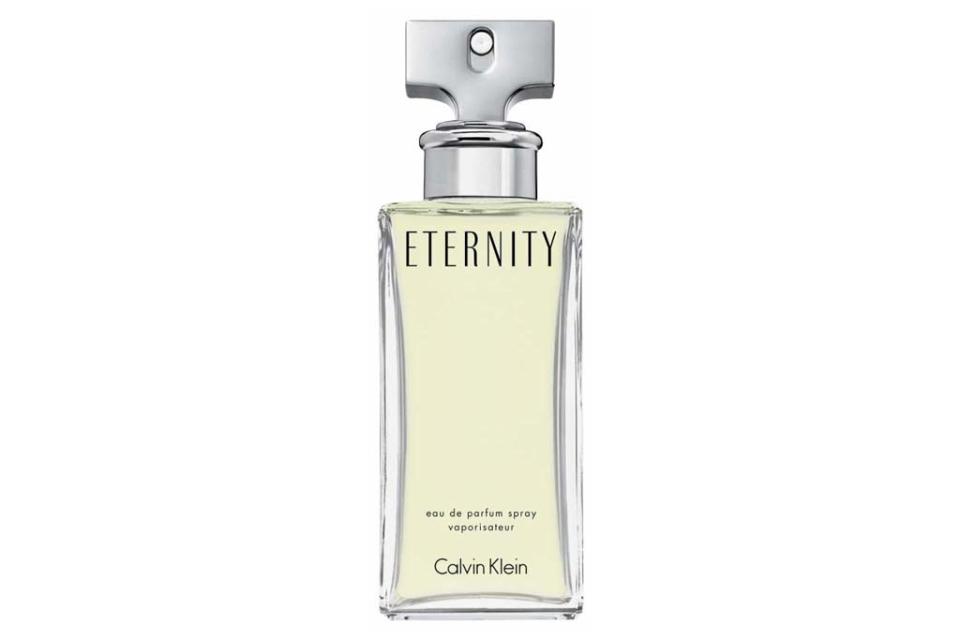
Eternity Calvin Klein
In 1989, the Minnetonka Corp. was sold to a subsidiary of Unilever plc, giving ownership of the Klein beauty business to the Anglo-Dutch giant.
Klein entered the bridge category with CK Calvin Klein women’s apparel in 1992. He turned Kate Moss into a household name with a series of underwear ads featuring Moss with “Marky” Mark Wahlberg and the slogan, “The best protection against AIDS is to keep your Calvins on.” Moss posed nude in 1993 in Obsession ads, drawing much attention — both negative and controversial — for her waifish frame that helped usher in the model era dubbed “heroin chic.”
In an unprecedented marketing move in 1994, Klein launched the first unisex fragrance with CK One, complete with a striking black-and-white commercial featuring Moss and a crew of downtown types. That year, Warnaco Group acquired Calvin Klein’s underwear business and trademark. Warnaco was also granted a men’s small leather goods/accessories license. Gabriella Forte, former head of Giorgio Armani’s U.S. operations, was named president and chief operating officer of Calvin Klein Inc.
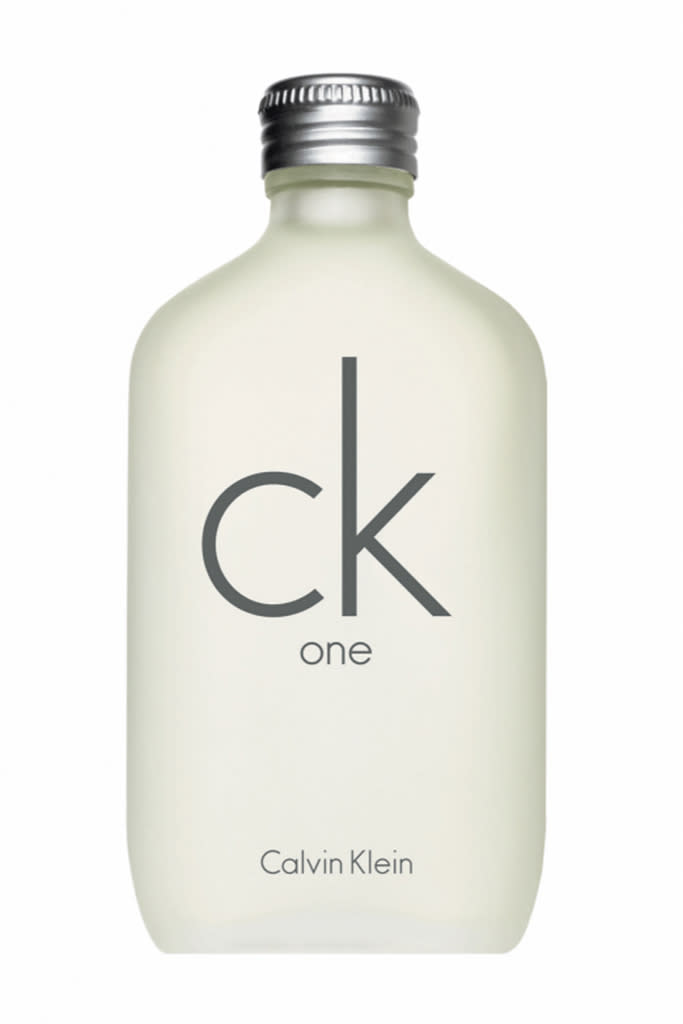
In 1995, the Calvin Klein Collection boutique opened at 654 Madison Avenue, underscoring Klein’s minimalism with a groundbreaking interior designed by British architect John Pawson that would influence store design for years to come. That same year, Klein launched the home category with bed, bath and tabletop items. Klein drew more controversy, this time with the Feds, for his Steven Meisel-shot campaign featuring teen models in a basement set reminiscent of ’60s pornography.

In 1996, the designer followed the success of CK One with CK Be. Tom Murry, president of Tahari Inc., was named president of CK Calvin Klein, succeeding Denise Seegal, and Warnaco acquired Designer Holdings, the maker of Calvin Klein Jeans.
In 1997, Calvin Klein Inc. teamed with Swiss watchmaker SMH for a license for the sale of Calvin Klein watches (SMH changed its name to The Swatch Group Ltd. in 1998). Klein introduced the fragrance Contradiction.
In 1999, Polo Ralph Lauren defeated plaintiff Calvin Klein Cosmetics Co. in a lawsuit claiming that the bottle of Ralph Lauren’s Romance fragrance was a knockoff of Calvin Klein’s Eternity packaging. That same year, Klein came under fire for an ad campaign featuring children in underwear. Considered by some to be child pornography, the Mario Testino-shot photos caused a nationwide outrage. While Klein had been involved in controversial ads before, most notably with the Moss ads for Obsession and the Steven Meisel photographed ones, this campaign backfired. The brand canceled plans to unveil a billboard in Times Square during New York Fashion Week. That same year, Forte resigned from Klein, and Murry became the company’s president and chief operating officer.
Klein was presented with a plaque on Seventh Avenue’s Fashion Walk of Fame in 2000. That same year, Klein sued his biggest licensee, Warnaco, for federal trademark violations and unauthorized distribution of CK Jeanswear product, demanding the license back. Warnaco fired back with a counterclaim in June, charging CKI with ongoing and intentional breach of its obligations to Warnaco under several licensing agreements. Warnaco also sued CKI and the designer, personally, for defamation and trade libel arising from comments he made on the “Larry King Live” show.
In 2001, just days before the start of a jury trial in federal court, CKI unilaterally ended Warnaco’s Calvin Klein Jeanswear license, filing papers in a Manhattan state court declaring the company had the right to end the license. Seven days later, on Jan. 22, Klein and Linda Wachner, Warnaco’s then-chairman and chief executive officer, literally kissed and made up after reaching an 11th-hour settlement. Terms of the settlement were not disclosed, but Warnaco was given the Calvin Klein Jeanswear license until 2044.
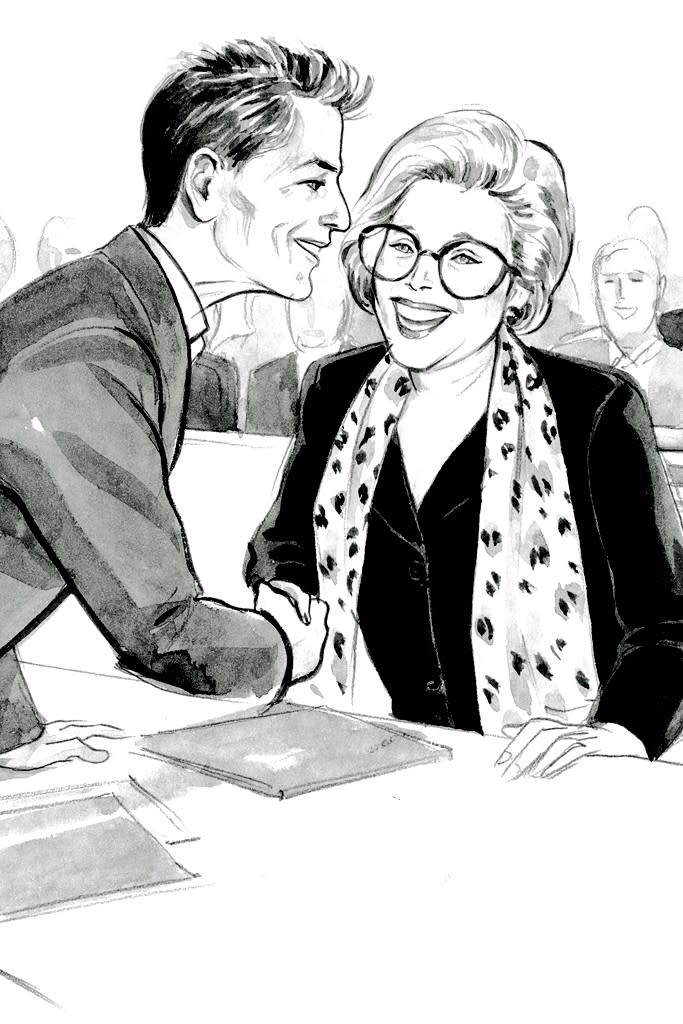
In a big moment for the company, Phillips-Van Heusen Corp. (now known as PVH Corp.), which at the time was best known as a maker of men’s shirts, acquired Calvin Klein Inc. from Klein and Schwartz in 2003 for a deal estimated to be worth as much as $700 million: $430 million in cash, with additional payouts of as much as $270 million in the years to follow. Klein and Schwartz each immediately pocketed $215 million in cash and stock from the deal. The transaction between Calvin Klein and PVH was financially supported by Apax Partners Inc., a New York private equity firm.
Following the deal, Klein stepped down as chief designer and became a consulting creative director. Schwartz left the company and for a time focused on his role as chairman of the New York Racing Association, which he held from 2000 to 2004, and ran a successful horse business, a passion of his.
In Klein’s place, Phillips-Van Heusen tapped three designers to oversee the brand’s Collection business: Francisco Costa for womenswear; Italo Zucchelli for menswear, and Ulrich Grimm for accessories. In the fall, the new designers presented their spring 2004 lines. Kevin Carrigan, creative director of women’s and men’s Calvin Klein white label and CK Calvin Klein, also unveiled his collection. Russian model Natalia Vodianova became the new face of the brand,
That same year, Klein made an unplanned court appearance at a New York Knicks game at Madison Square Garden, approaching Knicks’ bad boy Latrell Sprewell midgame as he was preparing to throw an in-bounds pass. Klein was escorted away by security and a few weeks later, checked into rehab.
Later in 2003, CKI signed a deal with Kellwood Co., and a new company, G.A.V., to launch Calvin Klein better sportswear in the U.S. and relaunch the CK Calvin Klein bridge women’s sportswear. Vestimenta in Italy took over the production of Calvin Klein Collection under license.
In 2005, a Calvin Klein Collection boutique opened in Milan and Kellwood Co. took over the CK Calvin Klein women’s bridge license from G.A.V. Florence-based Fingen SpA took over the Collection license from Vestimenta, which had filed for bankruptcy and was looking to exit the apparel business.
Warnaco bought the licenses and corresponding wholesale and retail businesses for several Calvin Klein-related entities from Fingen in 2005, including the Calvin Klein Jeans and accessories license for Europe and Asia and the CK Calvin Klein bridge sportswear and accessories license in Europe. It also agreed to take over the worldwide Calvin Klein Collection apparel and accessories license from Fingen starting in 2008. Euphoria Calvin Klein, a women’s scent that the company called an “addictive oriental,” launched in the fall of 2005.
In 2006, CKI decided not to renew Klein’s three-year consulting agreement and as of February 2006 the designer no longer had any formal relationship with the company and continues not to be involved in any way.
That year, Costa won his first CFDA Womenswear Designer of the Year award. The company unveiled its new show space, an 8,600-square-foot venue that can seat up to 600 people, on the ground floor of its headquarters at 205 West 39th Street in New York. Meanwhile, that year Moss returned to Calvin Klein with the fall ad campaign for Calvin Klein Jeans, shot by Mert Alas and Marcus Piggott, and also featuring actor Jamie Dornan. Klein and Kelly Klein divorced in 2006.
In 2007, the company unveiled the CK IN2U women’s and men’s fragrances, and the CK Calvin Klein color cosmetics line. Women’s CK Calvin Klein was reintroduced to the U.S. market. Zucchelli was nominated for his first CFDA Menswear Designer of the Year award. That year, China’s first Calvin Klein Collection store opened in Beijing.
PVH took the Calvin Klein Collection license back in-house from Warnaco in 2008. That year, Costa received his second CFDA Womenswear Designer of the Year award. CKI switched its better licenses from Kellwood Co. to G-III Apparel Group. The company added e-commerce to its website, calvinklein.com. CKI celebrated its 40th anniversary with a bash inside a John Pawson-designed structure, allowing visitors access to New York’s much anticipated High Line park project.
Calvin Klein’s Most Memorable Runway Moments



In 2010, Calvin Klein Inc. said it would build on its iconic unisex fragrance and together with Warnaco Inc. and the Coty Prestige unit Calvin Klein Fragrances, would launch a CK One global contemporary brand, with jeanswear, underwear and swimwear. That year, Klein signed an exclusive deal with model Lara Stone as the face of Calvin Klein Collection, CK Calvin Klein and Calvin Klein Jeans for fall.
In March 2012, Calvin Klein took its European CK Calvin Klein apparel and accessories businesses in-house. CKI terminated its existing licensing agreements with Warnaco Group for the distribution and sale of CK Calvin Klein apparel and accessories and the operation of retail stores, effective in 2013. Consequently, PVH International, a division of PVH that also managed the Tommy Hilfiger brand globally (PVH added to its designer stable with the $3 billion acquisition of Tommy Hilfiger in 2010), established a dedicated team to operate the CK Calvin Klein apparel and accessories business in Europe.
In November 2012, PVH Corp said it would acquire Warnaco group in a deal valued at $2.9 billion. Warnaco’s Calvin Klein businesses would be folded into the Calvin Klein Inc. division of PVH and run by CKI CEO Tom Murry. Nearly 75 percent of Warnaco’s business was with the Calvin Klein brand.
After holding runway shows at its 205 West 39th Street headquarters for five years, Calvin Klein Inc. staged the spring Collection show in 2013 at the new, as-yet-unopened Spring Studios in TriBeCa. Calvin Klein was the first and only fashion house to show at Spring Studios during fashion week.

In 2013, Calvin Klein Inc. decided to rebrand the company women’s and men’s bridge apparel and accessories simply Calvin Klein, rather than CK Calvin Klein. The rebranding was part of a strategy to strengthen the global growth strategies for Calvin Klein across product categories and geographies.
Calvin Klein started its #MyCalvins campaign on Instagram in 2014, which was embraced by celebrities and influencers, exceeding more than 100,000 posts under the campaign’s hashtag in the first year.
In 2015, Justin Bieber and Lara Stone appeared in black-and-white photographs that were reminiscent of the Mark Wahlberg/Kate Moss campaign in the ’80s. The ads were shot by Mert Alas and Marcus Piggott in New York City and featured the duo in provocative poses wearing key looks from the jeans and underwear spring collections.
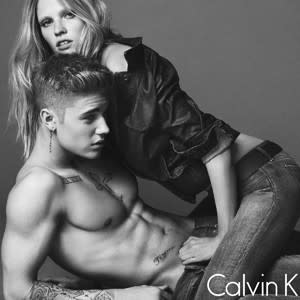
In April 2016, it was reported that Francisco Costa and Italo Zucchelli would be leaving the company. Fall 2016 marked Costa’s last women’s show for the house.
After months of speculation, Calvin Klein appointed Raf Simons — who had exited Christian Dior as its creative director a year earlier — as chief creative officer of the brand in 2016, overseeing all aspects of design, global market and communications and visual creative services. He assumed the creative strategy of the Calvin Klein brand globally across the company’s ready-to-wear, bridge, sportswear, jeans, underwear and home lines. Pieter Mulier also joined as creative director, reporting to Simons and responsible for executing Simons’ creative and design vision for men’s and men’s rtw, bridge and better apparel and accessories. It was also reported that Kevin Carrigan resigned from the company for a creative role at Ralph Lauren.
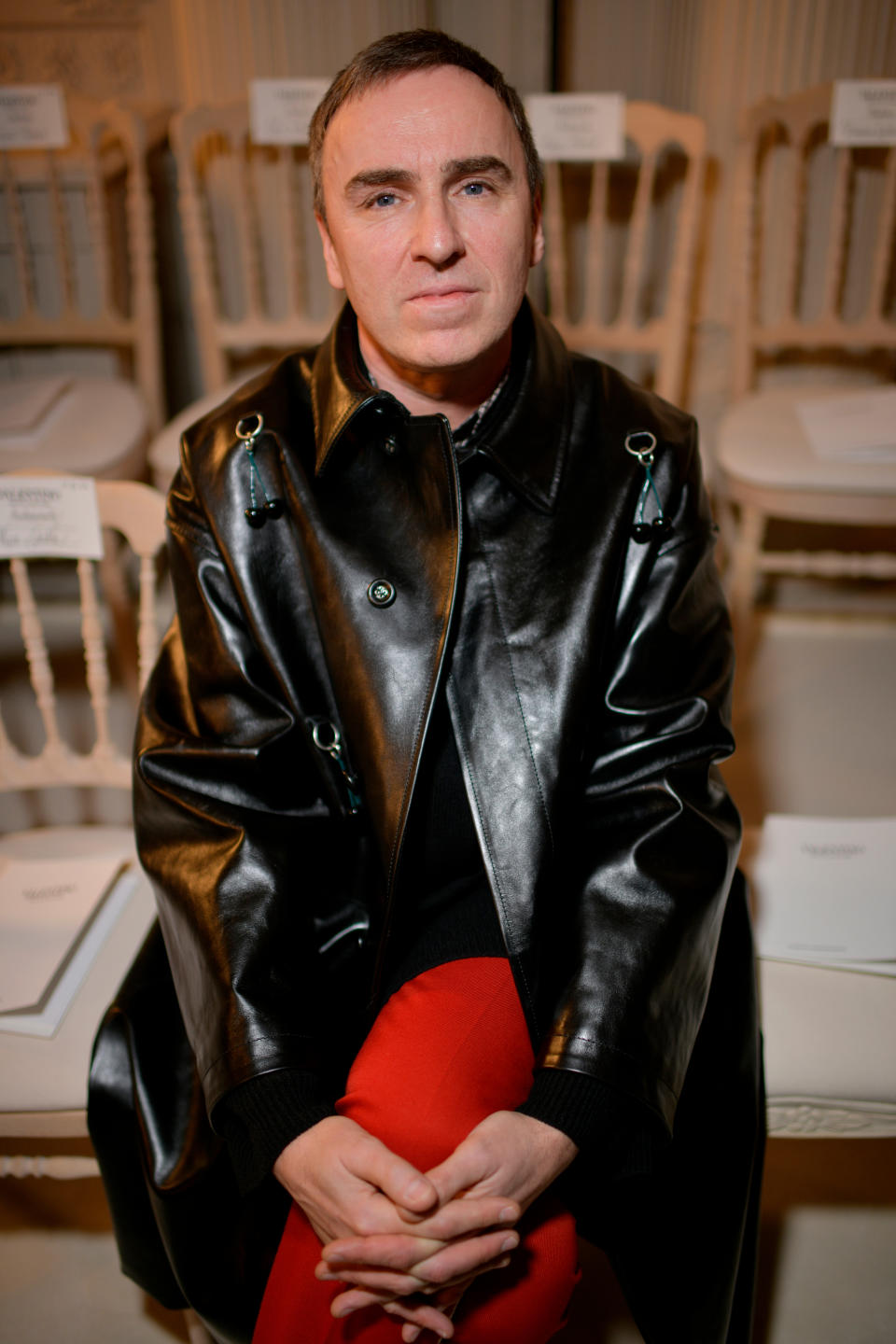
In December 2016, it was disclosed that Amy Mellen, senior vice president of home, would leave the company.
Simons’ first collections were introduced for fall 2017 with a show at CKI headquarters off Seventh Avenue that drew the likes of Brooke Shields, Gwyneth Paltrow, Amber Valletta, Sarah Jessica Parker and Julianne Moore. The designs were applauded by the industry. Linda Fargo, Bergdorf Goodman’s senior vice president, fashion director and store presentation, told WWD after Simons’ debut, “Calvin was really a smash. I thought he was pitch perfect with a lot of homage to the core DNA — you saw the perfect Calvin camel coat and references to CK with all the head-to-toe denim-inspired looks. The reference to an easy, somewhat androgynous mix felt very Calvin. Raf handled some American motifs really well, like the American quilt, varsity references, moto jackets. The most obvious was the fringed American flag scarf skirt.”
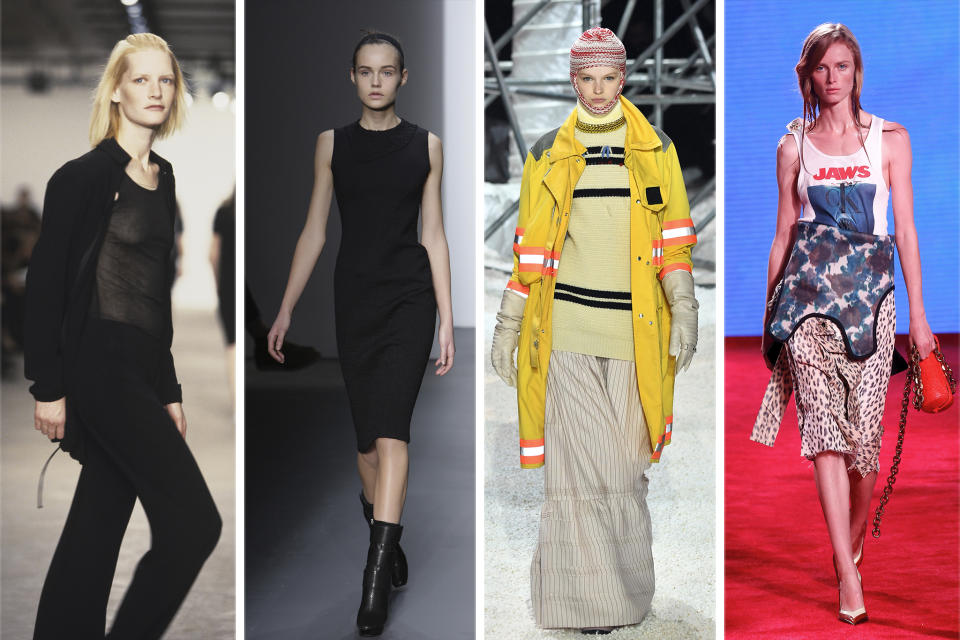
In 2018, Calvin Klein disclosed it would stop advertising in print starting in February 2019, instead taking a “digital-first, socially amplified model” with a strong video element.
In 2018, Klein’s ad campaigns were shot by Willy Vanderperre. The spring 2018 campaign featured more than 20 models shot in and around a weathered barn, and the models carried totemic objects created by Simons’ collaborator, artist Sterling Ruby.
Despite his collections earning praise from the fashion world, Simons’ designs failed to perform at retail. In November 2018, news that things weren’t going well between PVH and Simons surfaced when Emanuel Chirico, then-chairman and CEO of PVH, said in rather blunt terms on the company’s earnings call that the reimagined Calvin Klein — under Simons’ direction — was not working. He said the collection, renamed 205W39NYC, needed to become more commercial and that investments in the collection and advertising would be shifted elsewhere.
Further, Chirico said the redesigned Calvin Klein Jeans — also under Simons’ direction — was a “fashion miss,” telling investors, “From a product perspective, we went too far, too fast on both fashion and price. We are working on fixing this fashion miss, and we believe that our CK Jeans offering will be much more commercial and fashion-right beginning in 2019, especially for the fall 2019 season.”
PVH was said to have invested between $60 million and $70 million in the 205W39NYC collection over the three-year period, without seeing a return on its investment.
On Friday night, Dec. 21, 2018, a few days before the Christmas holiday, Calvin Klein Inc. revealed that Simons was leaving the firm, a mere 28 months into his tenure and eight months before his three-year contract was due to expire. The company said Klein had decided on a new brand direction that differed from Simons’ creative vision. (Simons was named co-creative director of Prada in April 2020).
After deciding in January 2019 to shutter its 205W39NYC business, the renamed high-end designer collection, Calvin Klein said it decided not to move forward with a traditional collection business at all. That same month, Calvin Klein decided to shut down its Madison Avenue flagship. The flagship, originally opened in 1995, was reimagined under Simons with a floor-to-ceiling installation by artist Sterling Ruby to showcase the Belgian designer’s 205W39NYC collection. Ruby had transformed the boutique in June 2017 from its minimal design by John Pawson to an otherworldly installation consisting of bright yellow walls, industrial scaffolding and soft, tie-dye fabric sculptures.
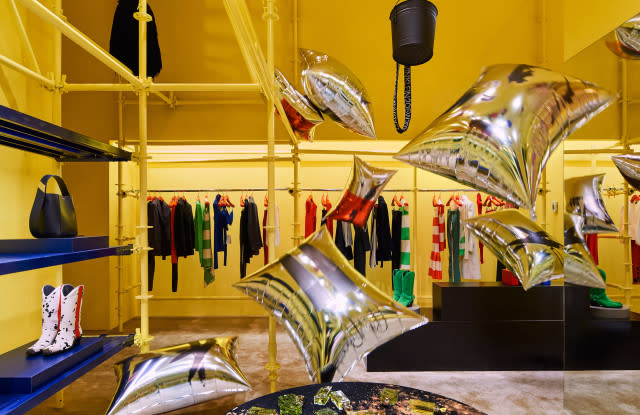
In spring 2019, Klein unfurled the #MyCalvins digital-first campaign featuring Kendall Jenner, Shawn Mendes, Noah Centineo and A$AP Rocky.
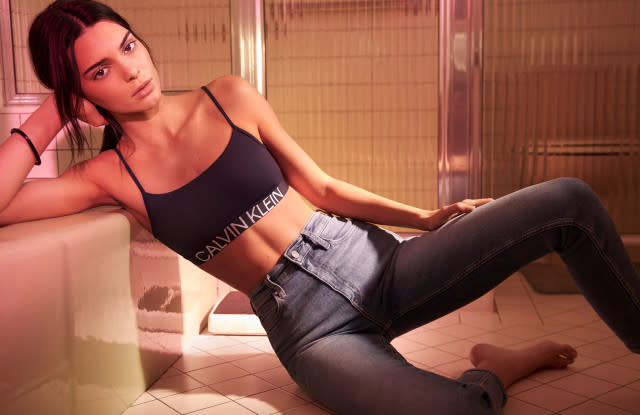
In June 2019, Cheryl Abel-Hodges was named CEO of Calvin Klein, succeeding Steve Shiffman, who had served in the post since 2014, before which he was president and chief commercial officer of CKI.
In October 2019, Marie Gulin-Merle, chief marketing officer of Calvin Klein Inc. and chief digital officer of PVH Corp., said she would be leaving the company. Her role was to lead PVH’s global digital strategy and transformation across the brands. Also that year, Swatch Group and PVH Corp. decided to end their watch licensing agreement for the Calvin Klein brand.
Jessica Lomax was named global head of design, leading Calvin Klein’s global design strategy and providing creative direction across all areas of the business, in November 2020.
In February 2021, the torch officially passed from Manny Chirico to Stefan Larsson as CEO of PVH Corp., Calvin Klein’s parent.
In a major move in November 2022, PVH said it would unwind its licensing agreements with G-III Apparel group for Calvin Klein and Tommy Hilfiger women’s wholesale apparel in the U.S. by 2027. Those two businesses accounted for 48.2 percent of sales at G-III Apparel in 2022.
In December 2022, Eva Serrano was named global brand president of Calvin Klein, having spent 20 years with Inditex and its Zara business. She reports to Larsson. Donald Kohler was tapped as president of Calvin Klein Americas, reporting to Larsson, in January 2023..
Calvin Klein named BTS member Jung Kook as global brand ambassador for Calvin Klein Jeans and Underwear in March 2023. Calvin Klein’s spring 2023 campaign, directed and photographed by Mert Alas and Marcus Piggott, featured a cast of global stars such as Jennie Kim of Blackpink, Kendall Jenner and FKA Twigs, as well as Michael B. Jordan and Aaron Taylor-Johnson, their debut for the brand. The brand continued the “Calvins or Nothing” concept, which focuses on the sensuality and confidence of the diverse talent.
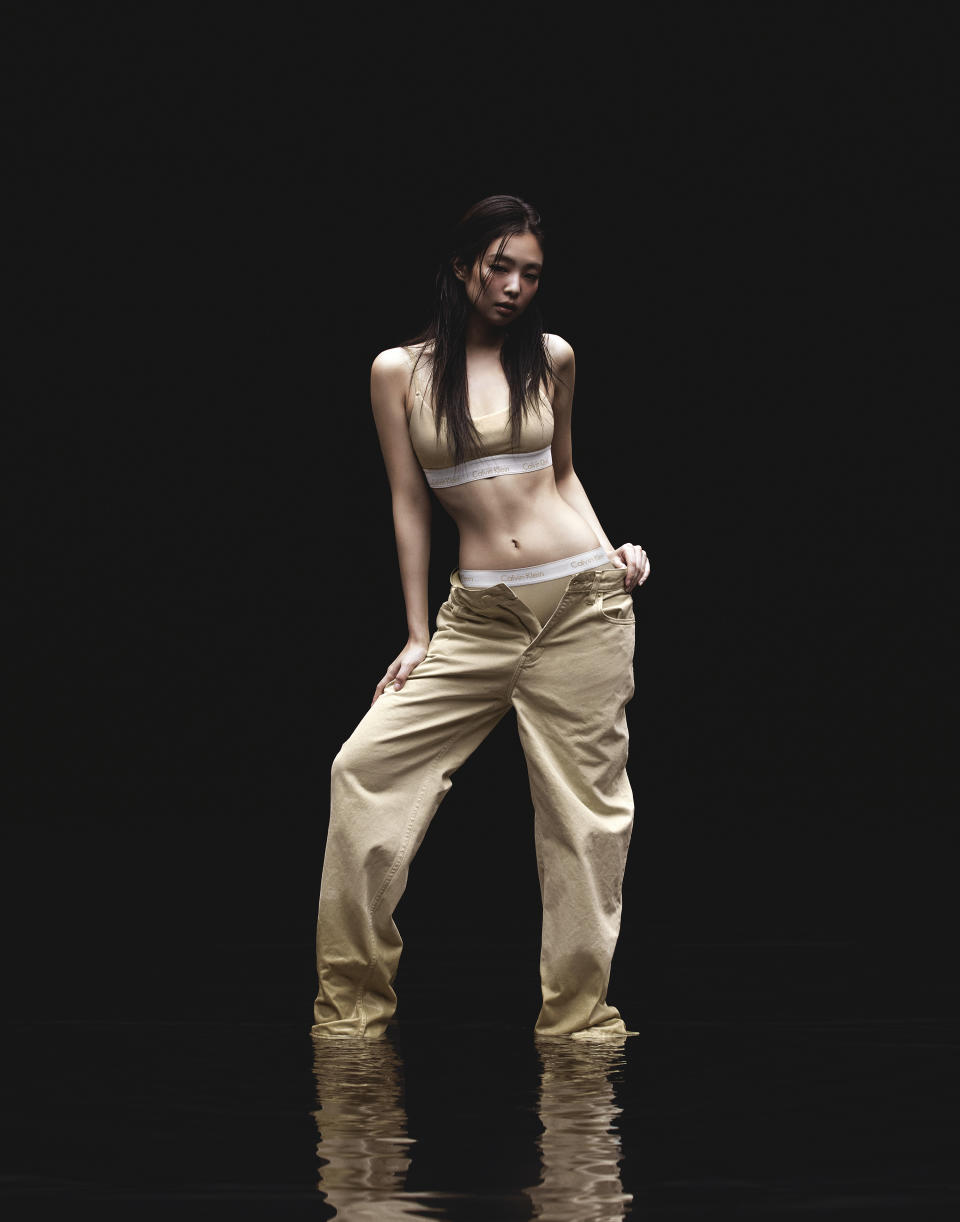
Calvin Klein said in September 2023, it would open a new store at 44 Avenue des Champs-élysées in Paris in 2024.
Calvin Klein Through the Years, Photos



Launch Gallery: Calvin Klein: A Look Back
Best of WWD
